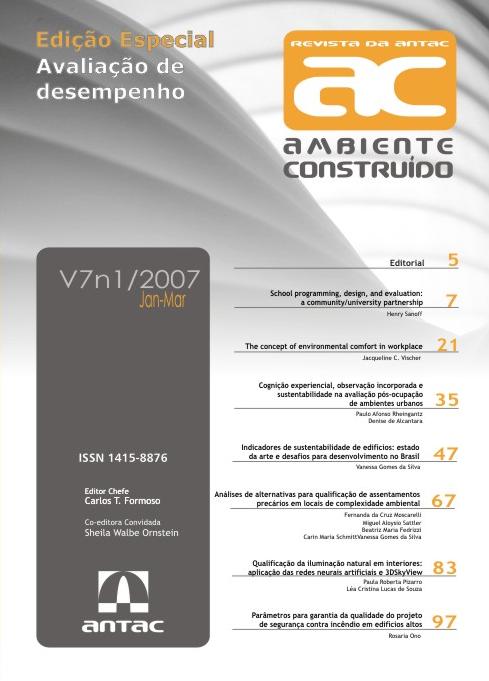O conceito de conforto ambiental no desempenho do ambiente de trabalho
Palabras clave:
Conforto ambiente, Desempenho no ambiente de trabalho, Produtividade no trabalhoResumen
The concept of workplace performance is applied to workspace design whose explicit objective is to support the performance of work. In this article, we argue that there are a variety of approaches to defining worker productivity in relation to the buildings they occupy. As a result of the growing knowledge in this area of study, more is understood about how workspace affects building occupants and their work. The concept of environmental comfort is presented as a useful way of organizing and exploring the knowledge we are acquiring in this area. Environmental comfort is composed of three types of comfort, each of which can be measured and which together determine occupant morale and well-being as well as task performance and effectiveness. The theory of environmental comfort considers situations where comfort is lacking, as stressful. An important ingredient of this approach is developing ways of measuring stress at work due to an inappropriate environment. In the second part of the article, data are presented from workers in a large Canadian insurance company, which were analysed to test specific hypotheses pertaining of the different categories of environmental comfort. The results indicate that while a convincing case can be made for the three categories of environmental comfort, more research is needed to test the usefulness of this theoretical approach.Descargas
Descargas
Publicado
Cómo citar
Número
Sección
Licencia
Aviso de derechos de autor/a
Derechos autorales
Los autores que publican en Ambiente Construído aceptan los términos:
- Los autores otorgan a la Revista el derecho de publicar bajo la Licencia de Atribución Creative Commons (CC BY 4.0), permitiendo el acceso, impresión, lectura, distribución, adaptación y desarrollo de otras investigaciones, si se reconoce la autoría.
- Se autoriza a los autores a distribuir el trabajo publicado en la Revista, como repositorios institucionales, o a incluir su artículo como parte de la tesis y/o disertación, siempre y cuando mencionen la referencia de publicación en Ambiente Construído.
- Cualquier persona puede leer, distribuir, imprimir, descargar e indicar la dirección del artículo completo sin autorización previa de la Revista respetando la licencia CC BY 4.0.
Creative Commons Attribution License
ISSN 1678-8621




